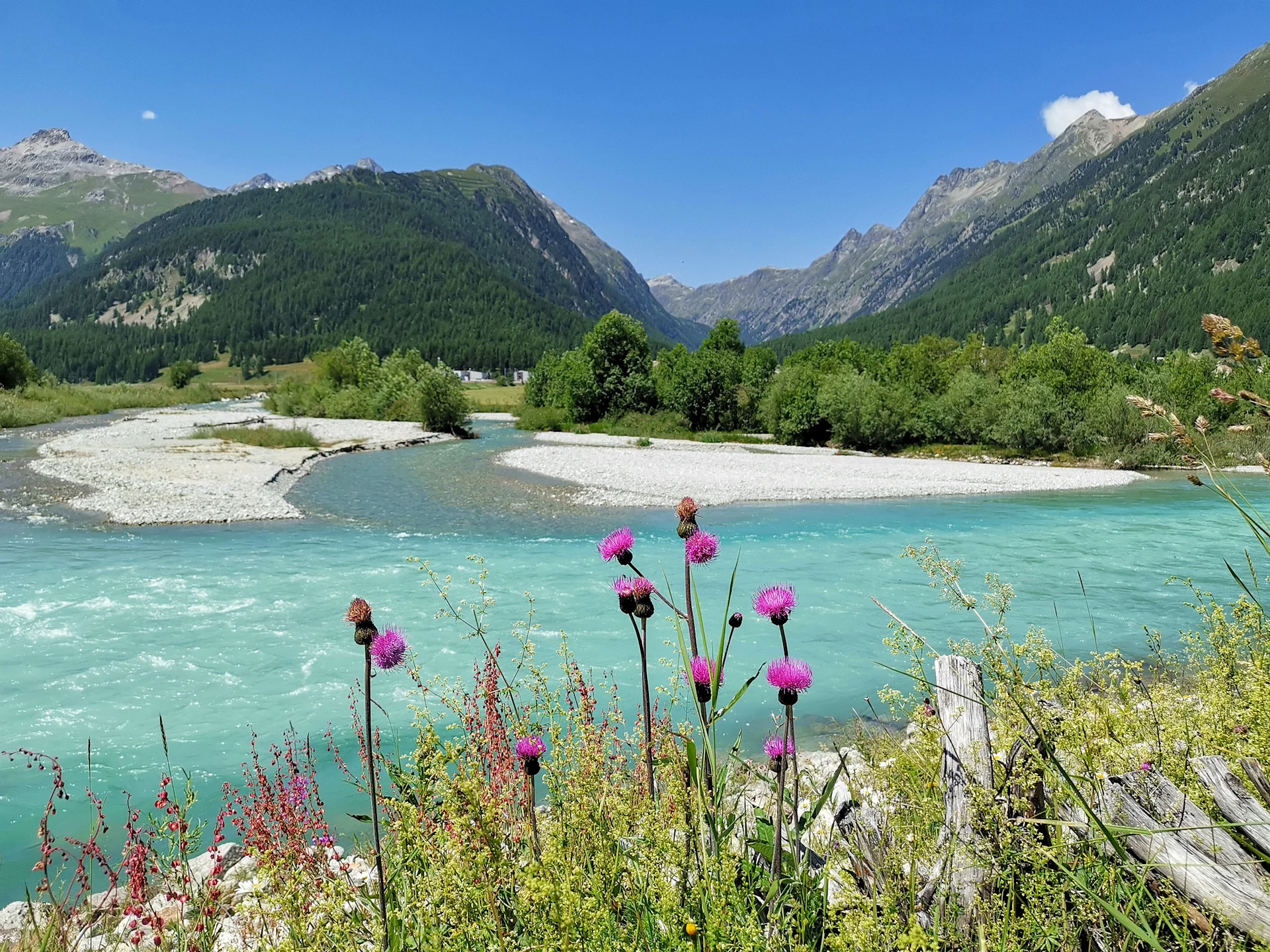
Biodiversity
Back to nature
The example of Bever shows the benefits of renaturation the floodplains. We also present four day trip destinations.
navigation

Biodiversity
Planting a flower meadow, hanging up a bird box, digging less in the garden ... There are plenty of things we can all easily do to promote biodiversity.
Depending on the type of construction, insect hotels offer refuge for wild bees, butterflies or spiders. These small shelters, which also serve as valuable nesting or hibernation sites, must be protected from the wind and placed with their open end facing south.
In urban areas, birds often lack nesting sites. As long as nesting boxes are inaccessible to cats, they increase the chances of reproduction for many species, while at the same time offering us an opportunity to be woken by the delicate sound of birdsong. But be careful: tits, swifts and kestrels don't have the same nesting needs. These require special birds boxes, otherwise they will simply avoid the shelters you set up for them.
A conifer or cherry laurel hedge is uninteresting in terms of biodiversity. By contrast, opting for a native species to protect yourself from prying eyes is both a good idea and will also please hedgehogs and amphibians, for example. The ideal combination is a mixed shrub of thorny species which provide shelter for animals (e.g. sea buckthorn or hawthorn) and honey-scented species (e.g. hazelnut or purple willow) that attract insects. Planting is done in the autumn.
Invasive neophytes - i.e. exotic plants that are intentionally or accidentally introduced into Switzerland - can take over a garden or field in no time at all. This is the case, for instance, with the American goldenrod (Solidago canadensis, Solidago gigantea, Solidago nemoralis). Originally added to gardens as an ornamental plant, goldenrod has since spread in the wild. It can often be seen along roadsides, but also in forest clearings and on riverbanks. The owners of infested plots are obliged to pull them up and dispose of them together with household rubbish (not in garden compost heaps!).
Whenever you buy products with the organic or ladybird logo, you're helping to support biodiversity. IP-Suisse farmers pile up stones and branches to provide shelter for reptiles. They also plant standard trees for rare birds to nest in and leave plots unused so that wild flowers and small animals can thrive there.
By avoiding the use of synthetic chemical pesticides and fertilisers and leaving as many plots of land as possible natural, organic farms are a true paradise for animal and plant species alike.
Even if you don’t have your own garden, you can still promote biodiversity. Flower boxes can even be placed on a balcony or windowsill. But be careful: if you want to attract pollinating insects, it’s important to choose plant species that like such pollinators. Bees, for example, love the flowers of lavender, thyme and echinacea. However, geraniums don't appeal to them because their flowers contain neither nectar nor pollen. Look out for the peat-free logo when buying bagged soil, since peat is extracted from bogs, which play an immensely important role for biodiversity.
Tips for an enticing balcony
Mowing, watering, fertilising: a lawn is a desert in terms of biodiversity and needs lots of maintenance. By comparison, a flower meadow is much less demanding – and visually even more spectacular. Start by removing the old vegetation, loosening the soil, adding some sand if the soil is particularly rich in nutrients and then sowing a seed mix in the spring. If your plants are tall and not flowering, you can mow your meadow and wait for the next set of blossoms to appear. Once the meadow has become established – sometimes this requires a little patience – it need only be mowed once or twice a year. Watering isn't necessary. If you still want to walk on your plot, you can opt for a flower lawn. This solution both promotes biodiversity and allows you to use this outdoor area for leisure purposes.
According to the Federal Statistical Office, 0.7 square metres of cultivated land are lost every second in Switzerland. Based on this insight, the start-up Get Nature Positive, which is supported by the Migros Pioneer Fund, wants to compensate for the impact that construction is having on the environment. Specifically, owners who erect buildings can buy a certificate and receive a Positive Nature label. The money raised in this way is then used to create new, nearly natural spaces in Switzerland that are suitable for many plant and animal species.
The ProSpecieRara foundation is looking for people willing to preserve varieties of so-called field-grown plants. These are 180 varieties of species ranging from flax and buckwheat to amaranth. A vegetable garden suffices here because the aim is not to turn plants into food, but rather to ensure that species survive. Any seeds that are not used for the next sowing cycle are sent to the ProSpecieRara seed library, which is responsible for preserving about 1700 rare plant varieties and bringing them back into circulation. These species are green fertilisers that enrich the soil of private homes in a natural way. They are also particularly beautiful to look at.
Digging kills small creatures. If you prefer a gentler method, use a mulch consisting of well-dried plant residues (e.g. grass and lawn cuttings), leaves and wood shavings. Lay several centimetres of it over your soil from autumn onwards. This insulating layer protects the plants, while at the same time providing nutrients for the small soil-dwelling creatures that also create valuable natural fertiliser for your plants when breaking down the mulch. In spring, the mulch ensures that you have fewer weeds.
Promoting biodiversity: we can't do it on our own. Play your part now and protect Switzerland's biodiversity together with us!